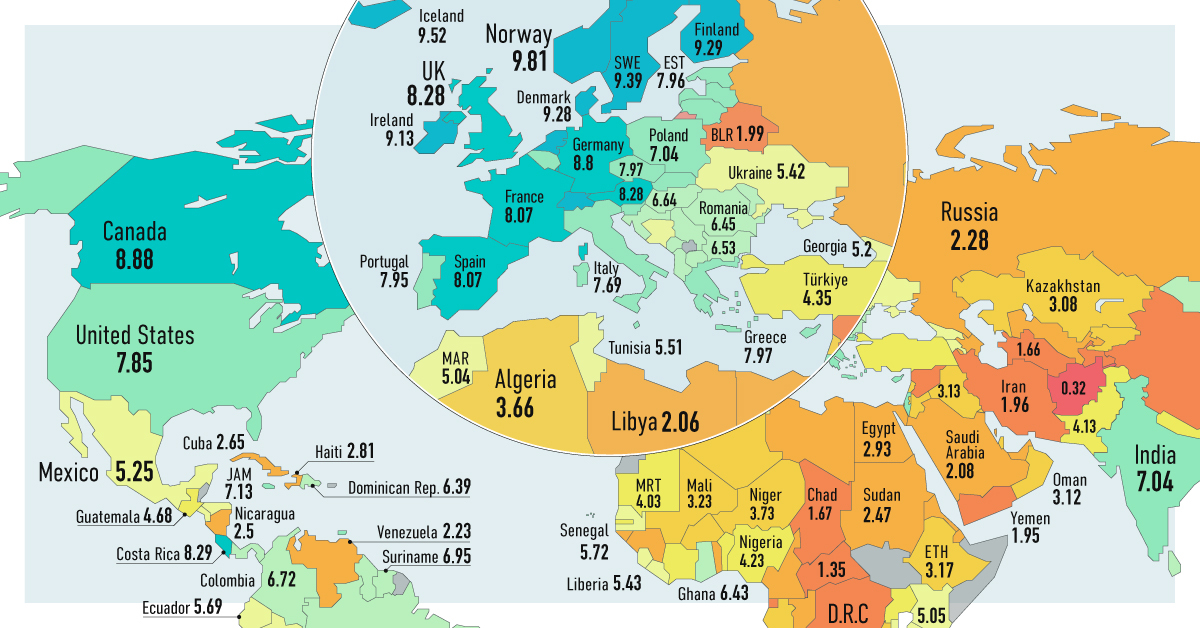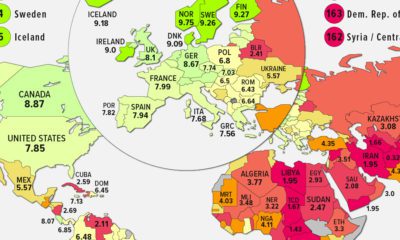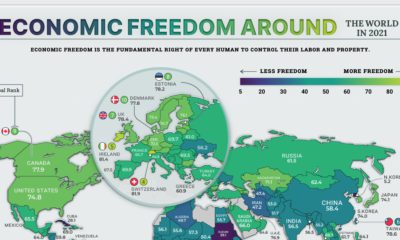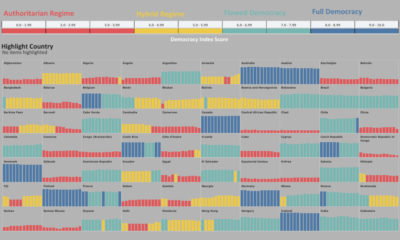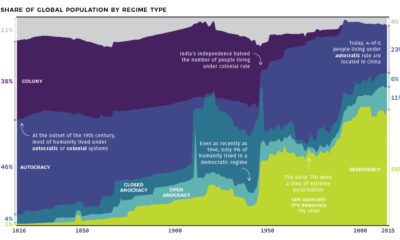Politics
Mapped: The State of Democracy Around the World
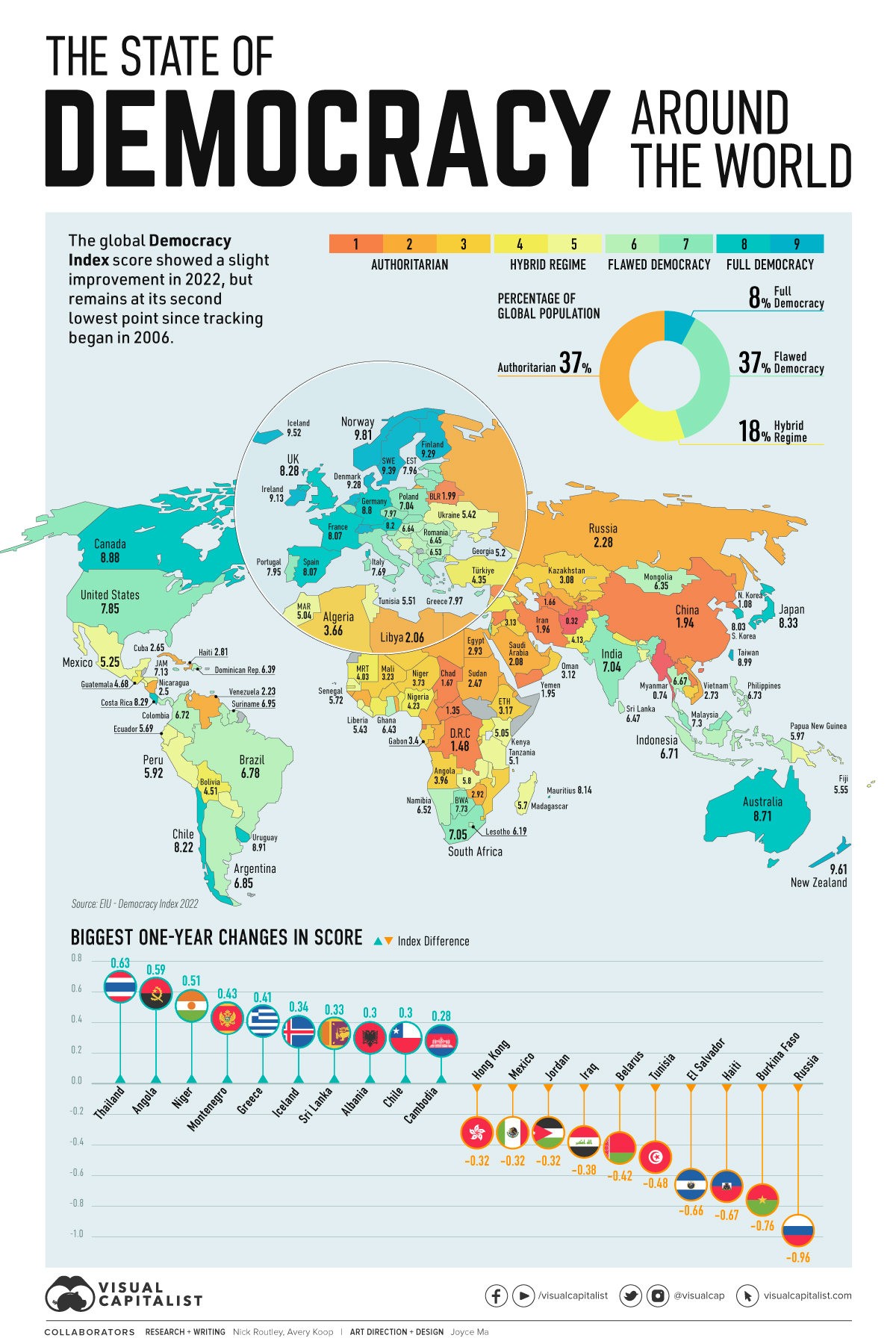
Mapped: The State of Democracy Around the World
Only 8% of the world’s population actually lives in a full, functioning democracy, according to the Economist Intelligence Unit (EIU).
Meanwhile, another 37% of people live in some type of “flawed democracy”, while 55% of the world does not live in democracy at all, based on the EIU’s latest Democracy Index Report.
Events such as the war in Ukraine and restrictive, long-lasting COVID-19 measures, have caused numerous declines to country democracy scores in recent years. Since the source report first began tracking scores in 2006, the global average has fallen from 5.52 to 5.29.
The Methodology
The EIU measures democracy by assessing 60 indicators across five key categories:
- Electoral process and pluralism
- Political culture
- Political participation
- Functioning of government
- Civil liberties
Each category has a rank of 0-10 based on how the indicators fared, and the overall democracy score is an average of each of the five categories. For example, here’s a look at the U.S.’ scoring out of 10 in each of the overall categories in 2022:
| Electoral process and pluralism | Functioning of government | Political participation | Political culture | Civil liberties |
|---|---|---|---|---|
| 9.17 | 6.43 | 8.89 | 6.25 | 8.53 |
🇺🇸 Total U.S. democracy score = 7.85 / 10
This score defines the U.S. as a flawed democracy and ranks it 30th overall in the world, down four spots from last year’s ranking. “Flawed” in this case simply means there are problems, ranging from poor political culture to governance issues, but flawed democracies are still considered to have free and fair elections, as well as civil liberties.
The World’s Democracies by Region
Below we map out the state of democracy across various regions around the world.
The Americas
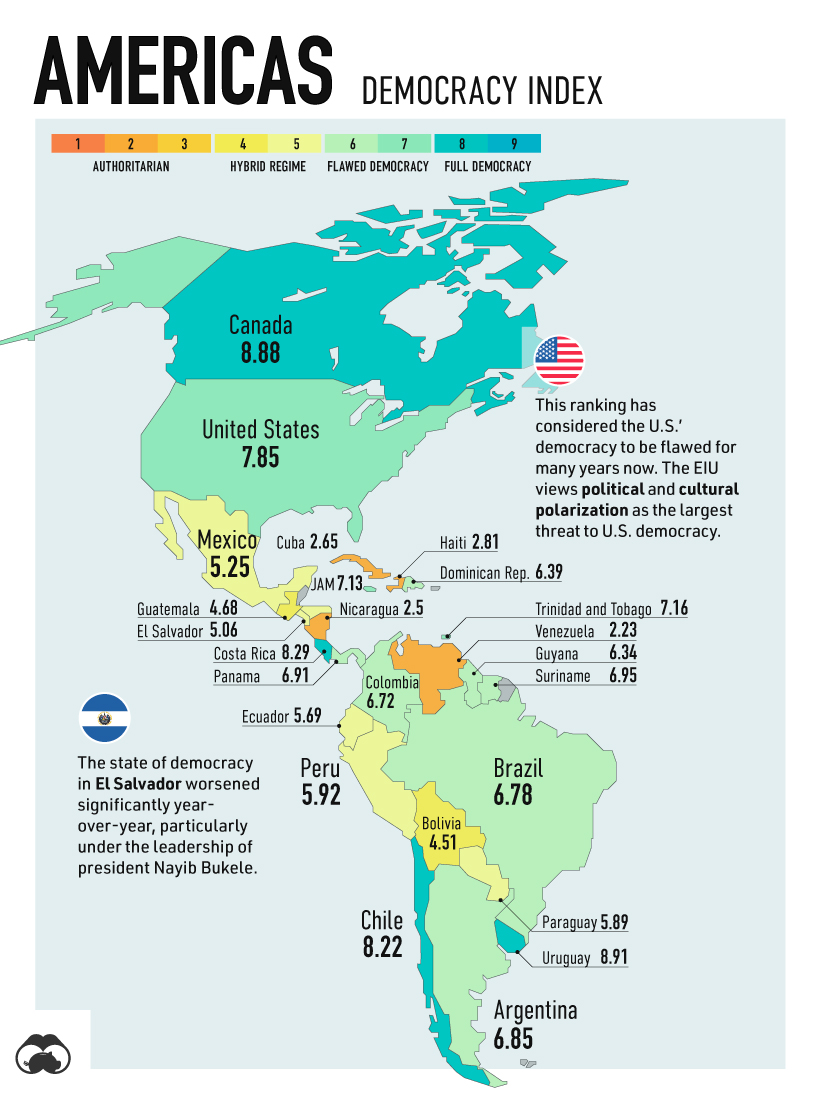
One of the best performers year-over-year was Chile, with its score increasing by nearly 0.3. The country moved out of the flawed democracy category last year, largely because of the shift towards constitutional reform alongside President Gabriel Boric moving towards the political center, reducing polarization.
Only three other countries in the Americas are also considered full democracies: Costa Rica, Canada, and Uruguay—the latter of which is #1 regionally.
On the flipside, some of the world’s worst performers year-over-year are located specifically in Latin America, namely: El Salvador and Haiti. Much of the low scores in the region are associated with high crime rates and corrupt governance.
Africa
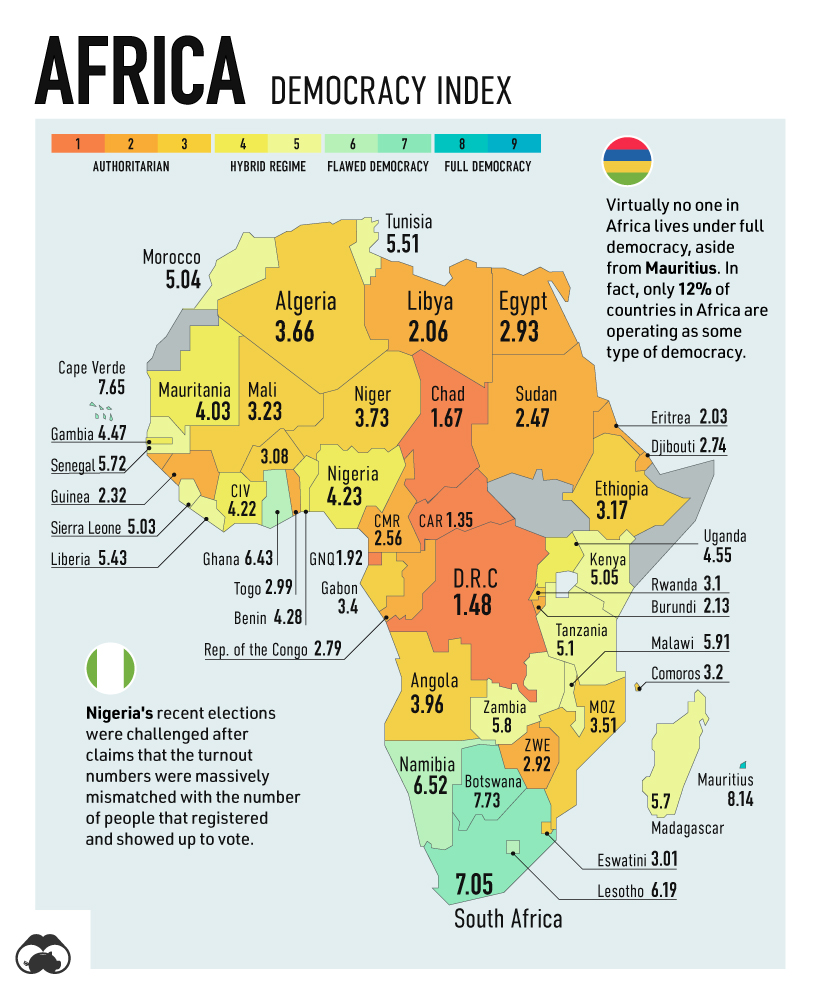
The only full democracy in Africa is the small, island nation of Mauritius. Overall, Africa is one of the lowest scoring regions with only five of the continent’s 54 countries ranking as some type of democracy.
Tunisia’s score decreased significantly in 2022. President Kais Saied dismissed parliament early in the year and took control of the electoral council, slowly shifting towards centralized power. And although there were critics, many have since been arrested, downgrading them in the EIU’s eyes from a flawed democracy to a hybrid regime.
Europe
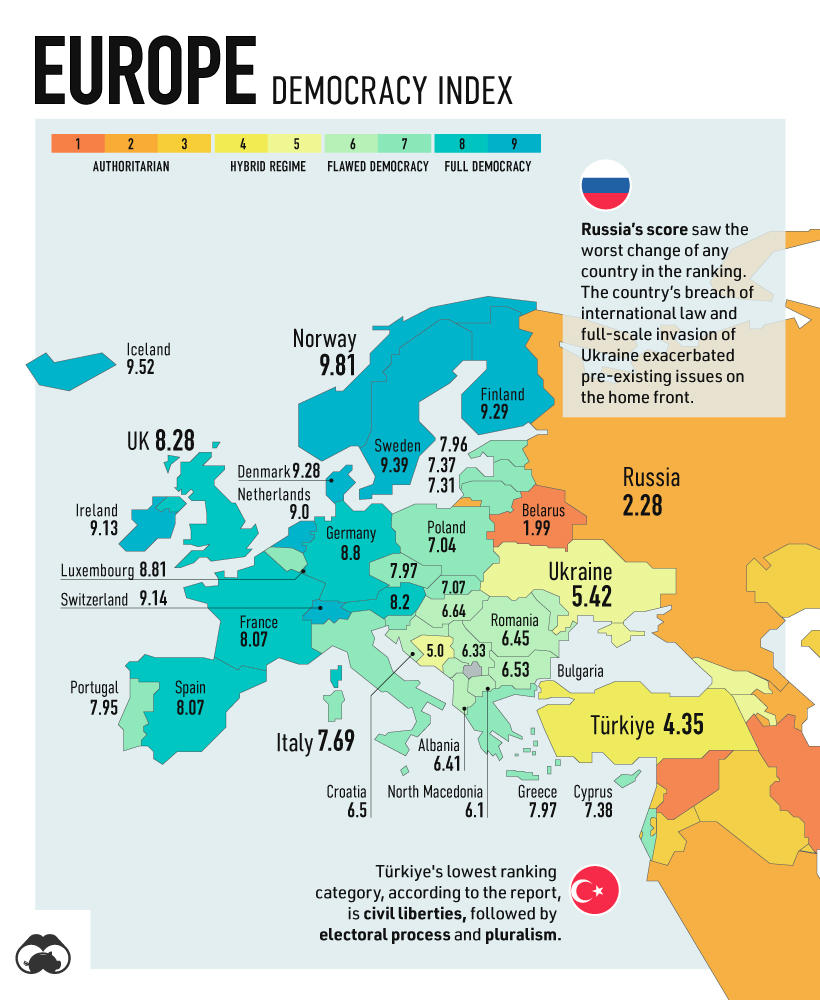
Spain and France regained status as full democracies in 2022, mainly improving in the civil liberties and functioning of government categories thanks to the easing of COVID-19 restrictions. However, both countries face political polarization; in Spain this is largely exemplified in the attitudes surrounding the Catalan separatist movement.
Some of the lowest scoring regimes in the region are in Russia and Belarus. Russia’s war in Ukraine has violated international law, as well as another country’s sovereignty, decimating its score by 0.96 in the index. Belarus has continually allied itself with Russia, allowing troops—and likely missiles—to enter Ukraine from its borders.
Oceania and East Asia
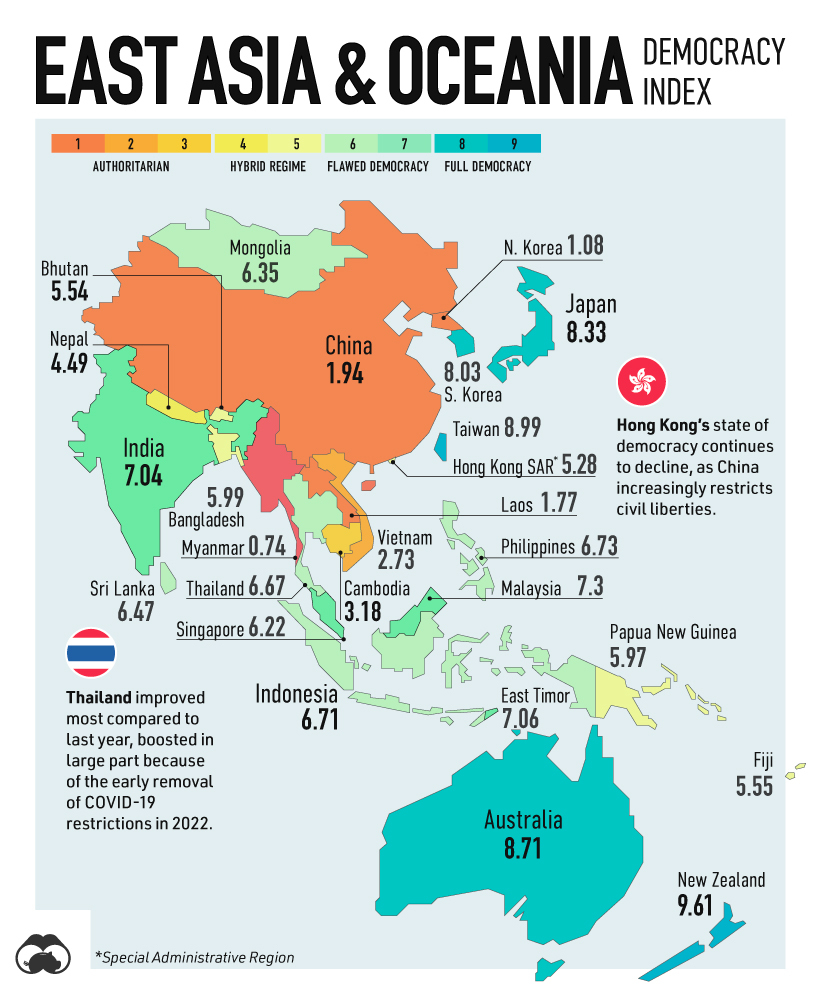
In this region, levels of democracy were severely affected by the COVID-19 pandemic. Hong Kong only removed restrictive policies like mask mandates in early 2023. In contrast, Thailand lifted these restrictions a year prior, providing more individual freedom, according to the report.
Malaysia’s fairly high score of 7.3 could face scrutiny, as the former Prime Minister, Muhyiddin Yassin, who was in office during COVID-19, is currently facing corruption charges for money laundering of COVID-19 stimulus package funds.
Central Asia and The Middle East
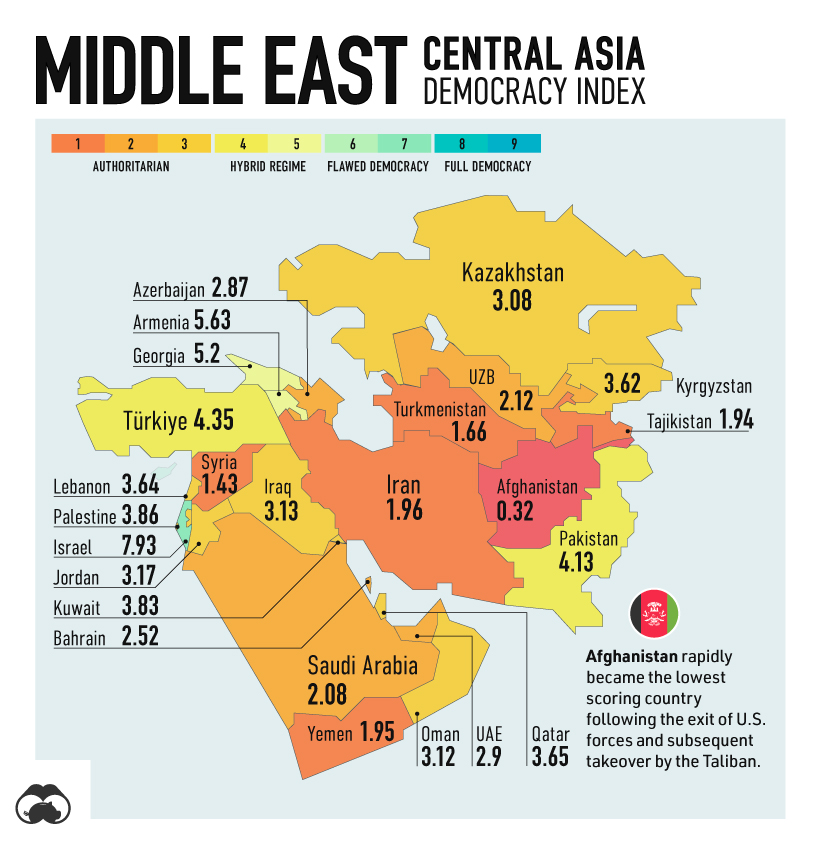
Finally, in the Middle East and Central Asia, there are no full democracies at all. The lowest scoring country globally is Afghanistan at only 0.32.
Israel, the only democracy of any kind of the region, actually moved down six spots in the global ranking from the year prior. Its lowest scoring category in 2022 was civil liberties. This year, the country is in the spotlight due to its judicial reforms proposed by the ruling nationalist party, and civil response has been strong. Mass protests continue around the country.
Where does this data come from?
Source: The Democracy Index Report by the Economist Intelligence Unit
Notes: This report, which has been produced by EIU since 2006, uses 60 indicators as well as public opinion polling and expert analysis to rank various countries. A detailed methodology can be found starting on page 66 of the report.
Politics
How Do Chinese Citizens Feel About Other Countries?
What is the Chinese public’s view of world powers? This visual breaks down Chinese sentiment towards other countries.
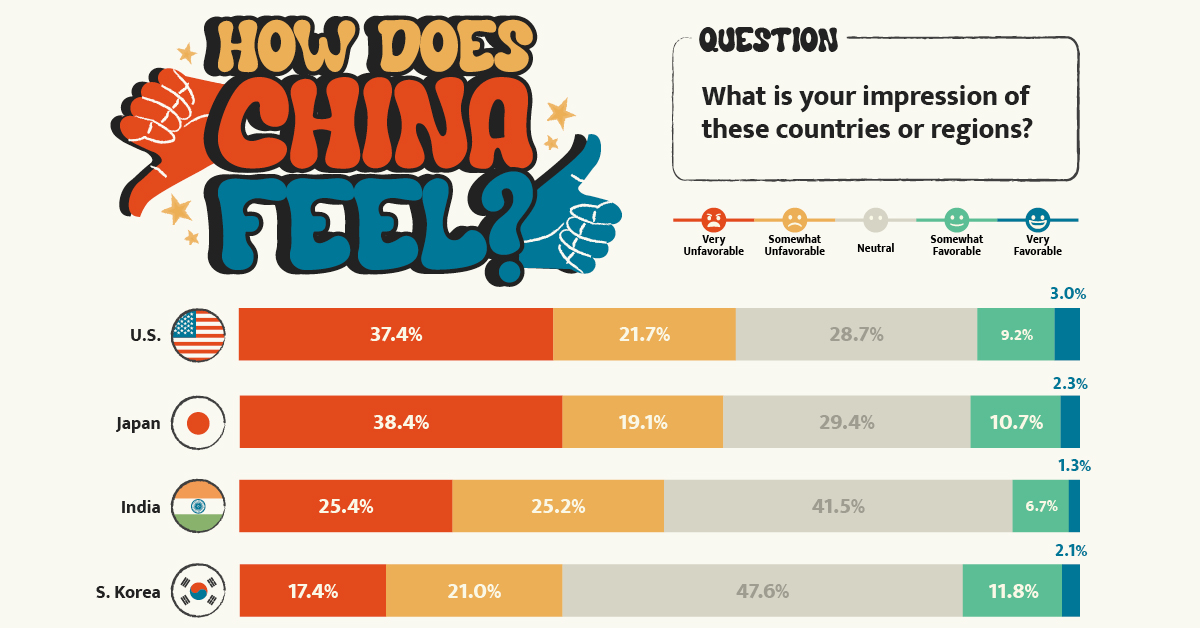
Public Opinion: How Chinese Citizens Feel About Other Countries
Tensions over Taiwan, the COVID-19 pandemic, trade, and the war in Ukraine have impacted Chinese sentiment towards other countries.
This visualization uses data from the Center for International Security and Strategy (CISS) at Tsinghua University to rank survey responses from the Chinese public on their attitudes towards countries and regions around the world.
Chinese Sentiment Towards Other Countries in 2023
In the Center’s opinion polls, which surveyed a random sample of more than 2,500 Chinese mainland adults in November 2022, Russia came out significantly ahead.
Just under 60% of respondents held Russia in a favorable view, with 19% seeing the country as “very favorable.” Contrast that to the mere 12% that viewed the U.S. in a positive light.
Here’s a closer look at the data. The percentages refer to the share of respondents that voted for said category.
| Country/Region | Very Unfavorable | Somewhat Unfavorable | Neutral | Somewhat Favorable | Very Favorable |
|---|---|---|---|---|---|
| 🇺🇸 United States | 37.4% | 21.7% | 28.7% | 9.2% | 3.0% |
| 🇯🇵 Japan | 38.4% | 19.1% | 29.4% | 10.7% | 2.3% |
| 🇮🇳 India | 25.4% | 25.2% | 41.5% | 6.7% | 1.3% |
| 🇰🇷 South Korea | 17.4% | 21.0% | 47.6% | 11.8% | 2.1% |
| 🇪🇺 European Union | 9.3% | 15.6% | 57.6% | 14.1% | 3.3% |
| Southeast Asia | 7.1% | 13.1% | 59.5% | 16.8% | 3.5% |
| 🇷🇺 Russia | 3.0% | 4.8% | 33.7% | 39.4% | 19.0% |
Japan ranked just below the U.S. in terms of overall unfavorability, though a slightly higher share of respondents saw Japan as “very unfavorable” compared to America. This is likely due to both modern tensions in the East China Sea over mutually claimed islands and historical tensions over the Sino-Japanese Wars.
Chinese sentiment towards India was also unfavorable at just over 50%, though notably the country also received the lowest favorability rating at just 8%.
Additional Survey Findings
The survey also found that 39% of Chinese people get their information on international security from Chinese state-run media (mainly through TV), with an additional 19% getting information from government websites and official social accounts. Conversely, only 1.7% get their news from foreign websites and foreign social media, partially due to the Great Firewall.
When asked about different international security issues, the biggest shares of Chinese citizens ranked the following as their top three:
- Pandemics (12.9%)
- Disputes over territory and territorial waters (12.9%)
- China-U.S. relations (12.0%)
The pandemic’s high score reflects the harsher impact COVID-19 had on China. Chinese borders were shut for years and the public faced intense measures to reduce spread.
In terms of other world events, the majority of Chinese people align with a more “Eastern” viewpoint. For example, in regards to the war in Ukraine, the report found that:
“About 80 percent of the respondents believe the U.S. and Western countries should be held most accountable [for the war], while less than ten percent of the respondents argue that Russia is mainly responsible.”– Center for International Security and Strategy, Tsinghua University
Overall, the views of the Chinese public reflect the opposite of those found in many Western countries. They provide an important insight that it is not just the Chinese government holding particular views about the world, but the Chinese public as well.
-

 Politics15 hours ago
Politics15 hours agoHow Do Chinese Citizens Feel About Other Countries?
-

 Markets4 weeks ago
Markets4 weeks agoVisualizing Every Company on the S&P 500 Index
-

 Economy2 weeks ago
Economy2 weeks agoVisualizing 1 Billion Square Feet of Empty Office Space
-
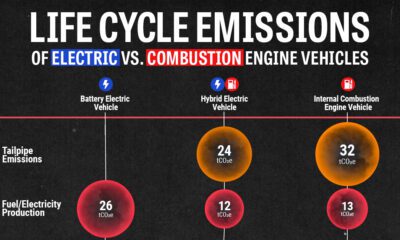
 Green4 weeks ago
Green4 weeks agoLife Cycle Emissions: EVs vs. Combustion Engine Vehicles
-

 Maps2 weeks ago
Maps2 weeks agoVintage Viz: The World’s Rivers and Lakes, Organized Neatly
-

 Markets3 weeks ago
Markets3 weeks agoVisualized: The 100 Largest U.S. Banks by Consolidated Assets
-
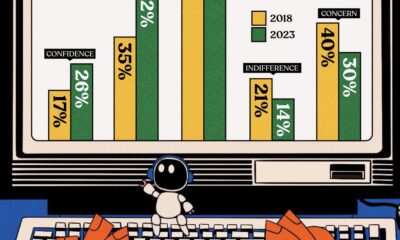
 Technology1 week ago
Technology1 week agoCharted: Changing Sentiments Towards AI in the Workplace
-
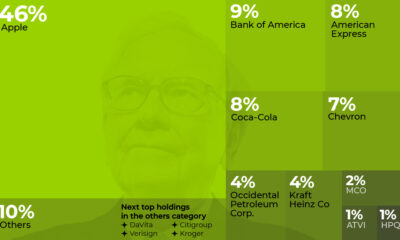
 Markets3 weeks ago
Markets3 weeks agoWhat are Top Investment Managers Holding in Their Portfolios?




